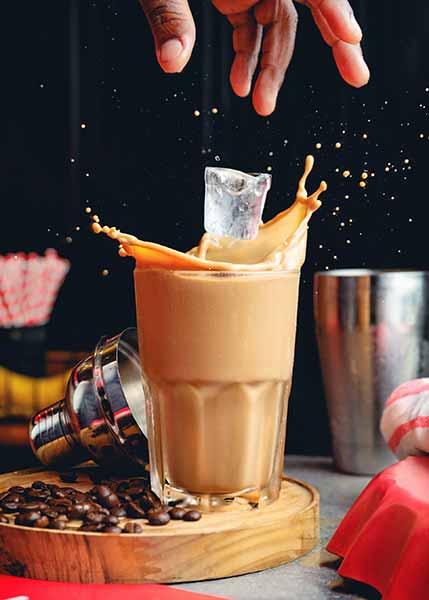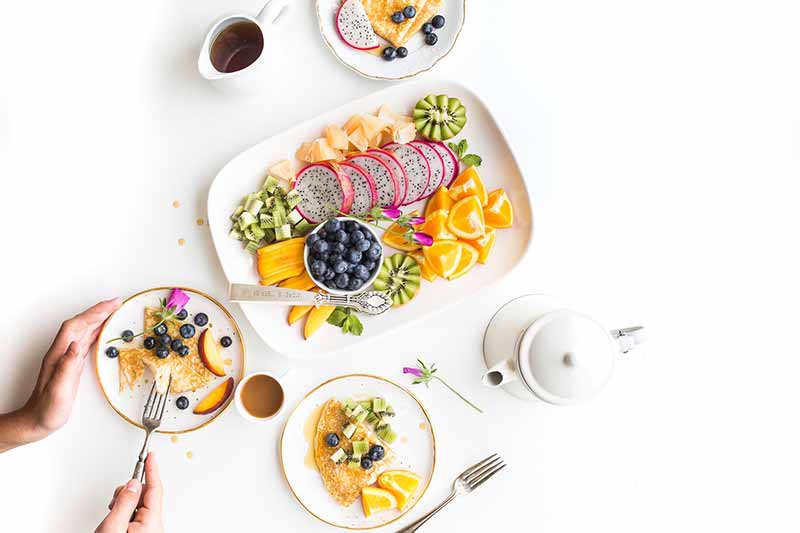13 Best & Useful Restaurant Food Photography Tips
Are you looking to photograph eye-catchy images of restaurant dishes? Or, do you want to take your restaurant food photography skills to the next level? If yes, this guide is for you. I will share the 13 best restaurant food photography tips that will help you capture the best food shots.
1. Pick a Good Composition Technique

Like any image, composition is the key to a beautiful image. The same is applicable to restaurant food photography too.
There are many photo composition techniques out there. Some work well for the restaurant food shots.
I will share some of the good composition techniques that you can consider trying based on my experience.
👉🏻 Rule of Odds
👉🏻 Golden Triangle
👉🏻 Rule of Thirds
👉🏻 Composing with Colors
2. Lighting is the Key

In the case of restaurant food photography, it will happen indoors. You can use natural or artificial lights.
If you go with artificial lights, there are two choices: flash and continuous light. When you select a continuous light make sure to get it with good color temperature accuracy. You can get the best color temperature accuracy with branded ones like Aputure.
If you go for a cheap quality light, it will ruin the whole image with unnecessary color casts.
3. Use Light Modifiers to Get a Soft Light
Food images from the restaurant will look stunning if you use soft light instead of hard light.
So, make sure to use an appropriate light modifier like a diffuser sheet in front to soften the hard light.
4. Background Matters

The background really matters for a food shot. If you are going for a flat lay style image or side-view shot, make sure that the background blends properly with the scene. Only then the image will look interesting.
You can get backgrounds in different shades and designs. You can also use any existing clothing for the background.
5. Try to Bring Some Life to the Image

Try to bring your own style to the restaurant food shots. Don’t just go with the same old textbook shots.
You need to make the image feel lively. For example, if you are photographing a cold coffee, try to go for an action shot where an ice cube falls into the cold coffee and spills it.
6. Make Sure Food is the Main Subject
As a photographer, the first thing you need to ensure when you set up for a food shot is to ensure the main subject is the food.
The viewer who looks at the image must immediately notice the food. There should not be any distracting elements in the scene that takes the viewer’s attention away.
So, arrange, compose, and capture properly.
7. Take Care of the Shadows

Many miss the unwanted shadow cast in the scene due to some issues in the lighting setup. This shadow can ruin the image completely.
The display of the camera is small. So, there is a chance that you miss these shadows.
I recommend you take a test shot at first. Zoom in the image to 100 percent and see if there are any unnecessary shadows.
If there are any, adjust your lighting accordingly.
8. Use Ingredients as Props

If you just capture the food alone, it may not look interesting.
To make the picture more aesthetically pleasing, you need to complement the main subject with appropriate props.
The best props you can use are the ingredients of the dish.
9. Use Colors for Composition
The trick to making a restaurant food image attractive to the viewer is to use the right color combination.
Some restaurants follow certain color patterns. So, it is a good idea to check with them to know about their color scheme.
If there is no color scheme, you can go with a color combination that is appropriate for each food.
You can even use the color wheel from Adobe to know the different color combinations that work well with images.
10. Try to Bring Hands in Shots

It is a good idea to bring hands in the shots. It will make the image more interesting.
The hands in the frame help to create a sense of movement in the picture. It really helps to make the picture look less staged and more natural.
But it is not possible to bring hands in all types of food shots. It will work only for certain types of images.
11. Use the Right Depth of Field
Many amateur photographers miss the Depth of Field part.
If you don’t select the right aperture value, your depth of field might be very narrow. Thus, some of the elements in the scene will be not in focus.
When it comes to food photography, you want all the elements in the scene to be in focus, especially for a top-down shot.
12. Shoot from the Best Angle

You must also ensure to shoot the scene from the best possible angle.
If you go for a side-view shot, you will be looking for a good background blur.
If you are shooting from the top, make sure that the front element of the camera lens is parallel to the scene.
Otherwise, some objects can be out of focus. It may also result in the foreshortening effect.
13. Retouch the Image for the Best Results
It is not a good idea to share the images directly from your camera with the client.
I strongly recommend you retouch all the pictures before sharing. You need to do some minor adjustments like exposure, contrast, etc. to make the photos look better.
Also, it is a good idea to shoot in RAW. It will allow you to edit the pictures in a better way.
Final Thoughts
You can use these tips to take your restaurant food images to the next level. High-quality commercial food photography demands good camera gear and equipment too. So, make sure to invest in the right gear for the best results.

